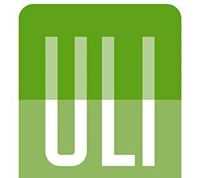Edwards’ Amendment On Stormwater Planning Adopted As Part Of Transportation Reauthorization Legislation
WASHINGTON, D.C. – November 4, 2015 – (RealEstateRama) — Congresswoman Donna F. Edwards’ (MD-4) amendment on stormwater planning was adopted today during debate on the House floor by voice vote.
“In Maryland, particularly throughout the Chesapeake Bay watershed, stormwater runoff is a growing threat to water quality, aquatic ecosystems, and the integrity of our transportation infrastructure. My amendment enables transportation planning agencies to mitigate stormwater impacts of surface transportation and reduce costs with early planning. I am grateful to Chairmen Shuster (PA-9) and Graves (LA-6), and Ranking Members Defazio (OR-4) and Norton (DC), for their leadership on moving this 6-year reauthorization forward and for their support for my amendment. I look forward to working with them in conference to include this provision and improve the final bill.”
Below is Rep. Edwards’ statement as prepared for delivery.
“Mr. Chairman, I have an amendment at the desk.
This amendment is consistent with the streamlining effort in this bill in that ultimately, it will reduce the overall cost of projects and the need for mitigation. So, it will save money.
As we know all too well, highway stormwater is a growing threat to water quality, aquatic ecosystems, and the fish and wildlife that depend on the health of these ecosystems. Moreover, the high volumes and rapid flow of stormwater runoff from highways and roads poses a serious threat to the condition of our nation’s water and transportation infrastructure.
Impervious surfaces create rapidly moving high volumes of untreated polluted stormwater that rush off of road surfaces, erode unnatural channels next to and ultimately underneath roadways comprising the integrity of roadway infrastructure, and increases the stress on storm sewer systems shortening the useful life of this infrastructure.
The total coverage of impervious surfaces in an area is usually expressed as a percentage of the total land area. According to the Chesapeake Bay Program, impervious surfaces compose roughly 17 percent of all urban and suburban lands in the Chesapeake Bay watershed. The greatest concentration of impervious surfaces in the bay watershed is in the Baltimore-Washington Metropolitan areas of DC, Maryland, and Virginia.
The Virginia Tidewater area, Philadelphia’s western suburbs, and Lancaster, PA, are also regions in our watershed where impervious surfaces are greater than 10 percent of the total land area.
While there are serious water quality concerns with not adequately controlling roadway infrastructure runoff, there are also serious infrastructure costs, that are ultimately passed on to taxpayers and ratepayers, that can be avoided if transportation authorities do more to control and manage stormwater runoff with the infrastructure assets they plan, manage, and build.
The aim of this amendment is to improve highway design to better manage stormwater to avoid the costly damage that poorly managed stormwater causes to infrastructure and nearby streams, rivers, and coastal waters. And to move this up in the planning process so that thought goes into how best to plan, design, and construct effectively while also reducing the costs. Now such thoughts are done near the end of the process, where mitigation is often used and costs are often much higher.
My amendment would move up the consideration of stormwater issues in statewide and metropolitan planning. Specifically, it would require consideration of projects and strategies that will improve the resilience and reliability of the transportation system and reduce or mitigate stormwater impacts of surface transportation.
Title 23 of the U.S. Code states: “transportation should play a significant role in promoting economic growth, improving the environment, and sustaining the quality of life” through the use of “context sensitive solutions.”
In 2008, the Government Accountability Office issued a report examining key issues and challenges that needed to be addressed in the next reauthorization of the transportation bill. That report highlighted the clear link between transportation policy and the environment. With almost a million miles of federal aid highways, polluted highway runoff is no small problem facing our country’s waters. I would urge my colleagues to join me trying to address this problem facing America’s waterways and infrastructure.”

















